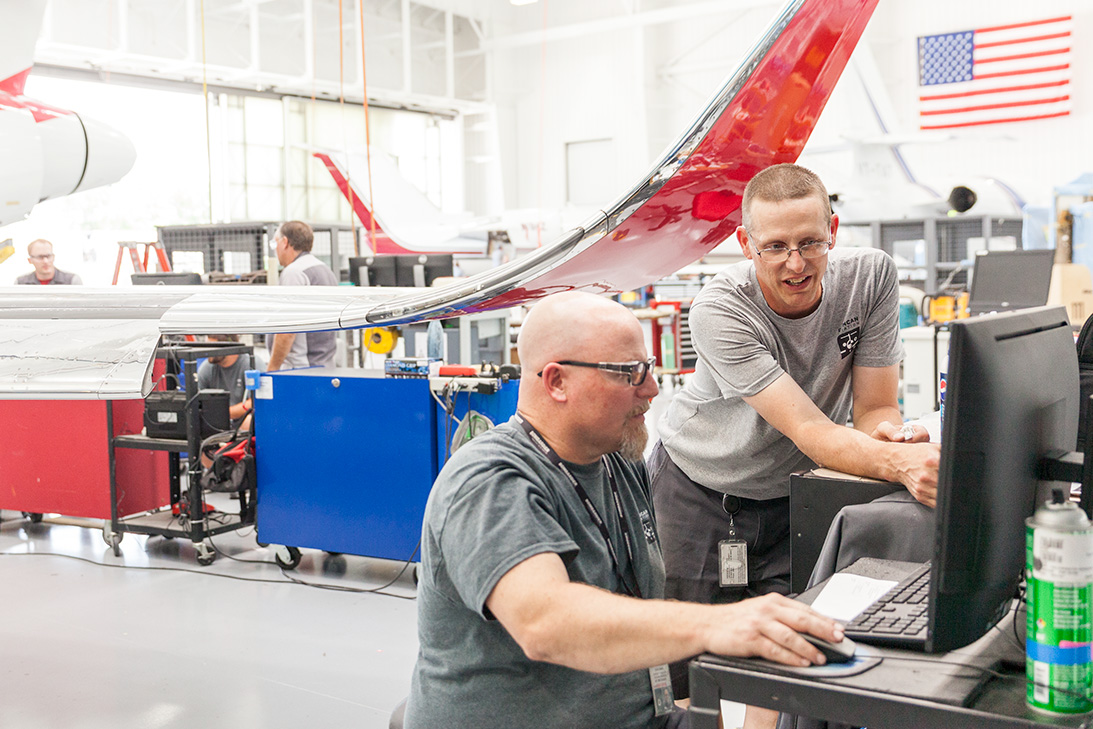
Aug. 11, 2023
Hard-to-find parts and a diminishing pool of workers are just some of the stresses faced by maintenance departments already tasked with the safe and timely upkeep of aircraft operating more hours than the industry has ever seen.
To shine a light on some of the best ways to keep a maintenance department at peak safety and efficiency, the NBAA brought together three of the industry’s leading directors of maintenance (DOMs) in its latest “Thought Leadership Webinar: DOMs Spill Their Secrets to Running the Most Efficient Flight Departments,” sponsored by Veryon.
Moderated by JD Smith, senior product manager of event sponsor Veryon, the webinar delivered more than 65 years of experience and insights from its three DOMs — former DOM Jay Bell, Laboratory Corporation of America Holdings’ Bruce Goss and The Boler Company’s Derek Popp — on topics ranging from performance metrics and employee motivation to improving relationship with other departments.
One of the most pressing issues for any maintenance department is reducing an aircraft’s downtime. “As with everything we are discussing, it depends on your specific situation, but for better aircraft availability, I’d say bring as much of the work you have to do in-house,” said Bell. “The more you can control, the more chance you can maximize your downtime.”
This control extends beyond the airframe, noted Popp. “Parts have been difficult to get since COVID, and if anything, the situation is getting worse. To make sure things run as smoothly as possible, you have to plan well ahead, get your parts now, not when you need them, and make sure that training is prominent,” he added. “Get to know your aircraft like the back of your hand.”
Non-routine maintenance calls for a different approach, added Goss. “We have shifts pretty much around the clock to diagnose and deal with the issues, but for non-routine maintenance, I’d say the best advice is to quickly communicate with scheduling and the flight crew,” he said. “You need to keep them informed because it can really affect your operation if scheduling doesn’t know what’s going on or passengers need to be contacted and provided alternative transportation.”
Communication is the key to success for every flight department. “A flight department is a team. We are all trying to get the same mission accomplished, so we need to keep all channels of communication open to allow conversations to flow freely so that if there’s ever a hitch, it can be addressed quickly before getting out of control,” said Bell.
Communication also is a critical factor in motivating staff, noted Goss. “It can be hard for someone to see a career progression in our line of work, especially in a small shop. If someone doesn’t see much changing between today and five or 10 years from now, that can be difficult, so I recommend sitting down with every team member and asking them their goals and seeing what you can do to help them get there,” he said. “I’ve had line mechanics want to become A&P mechanics, and we’ve worked on their schooling. I’ve also had line mechanics want to be pilots or dispatchers, and I’ve helped show them ways they can progress. I tell you, listening to and helping someone is far more motivating than a $2 an-hour raise or pizza Friday,” Goss added.
DOMs also need to look after themselves, the panelists noted. Keep training, join industry groups and find a hobby that allows you to disconnect from the hectic schedules of a maintenance department, they concluded.
And, as Popp noted, “Be patient and remember you are human.”


 International Business Aviation Council Ltd.
International Business Aviation Council Ltd.